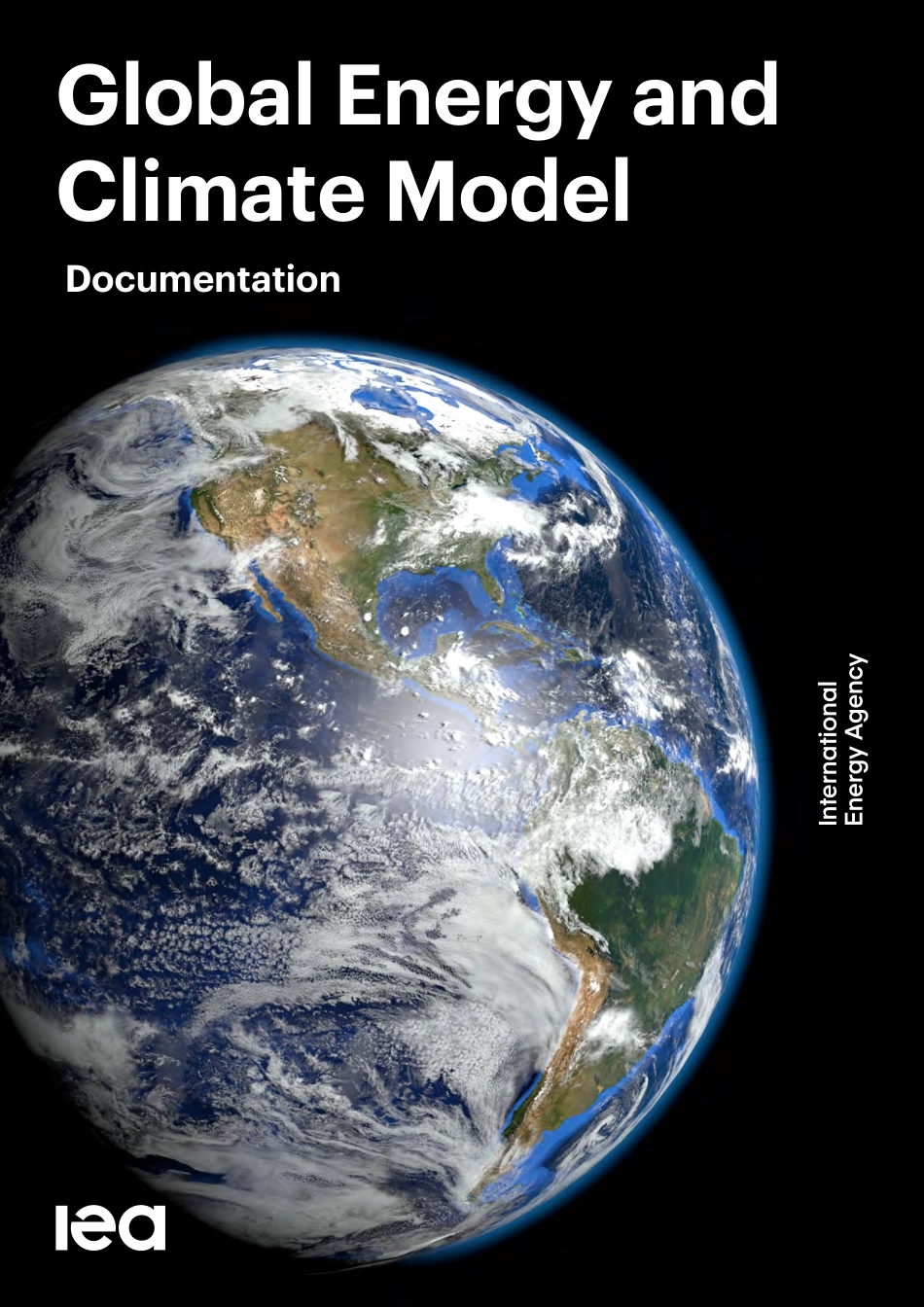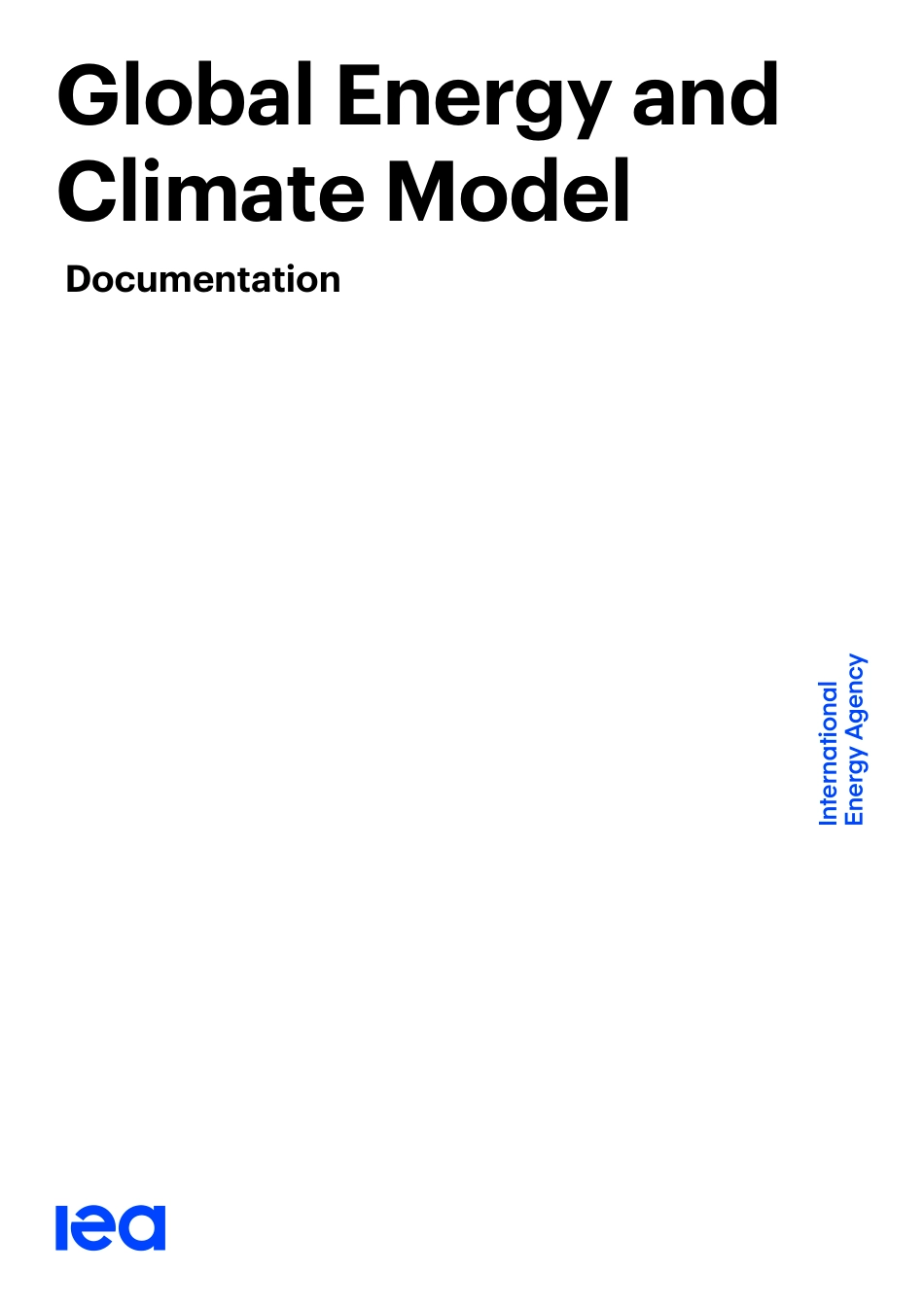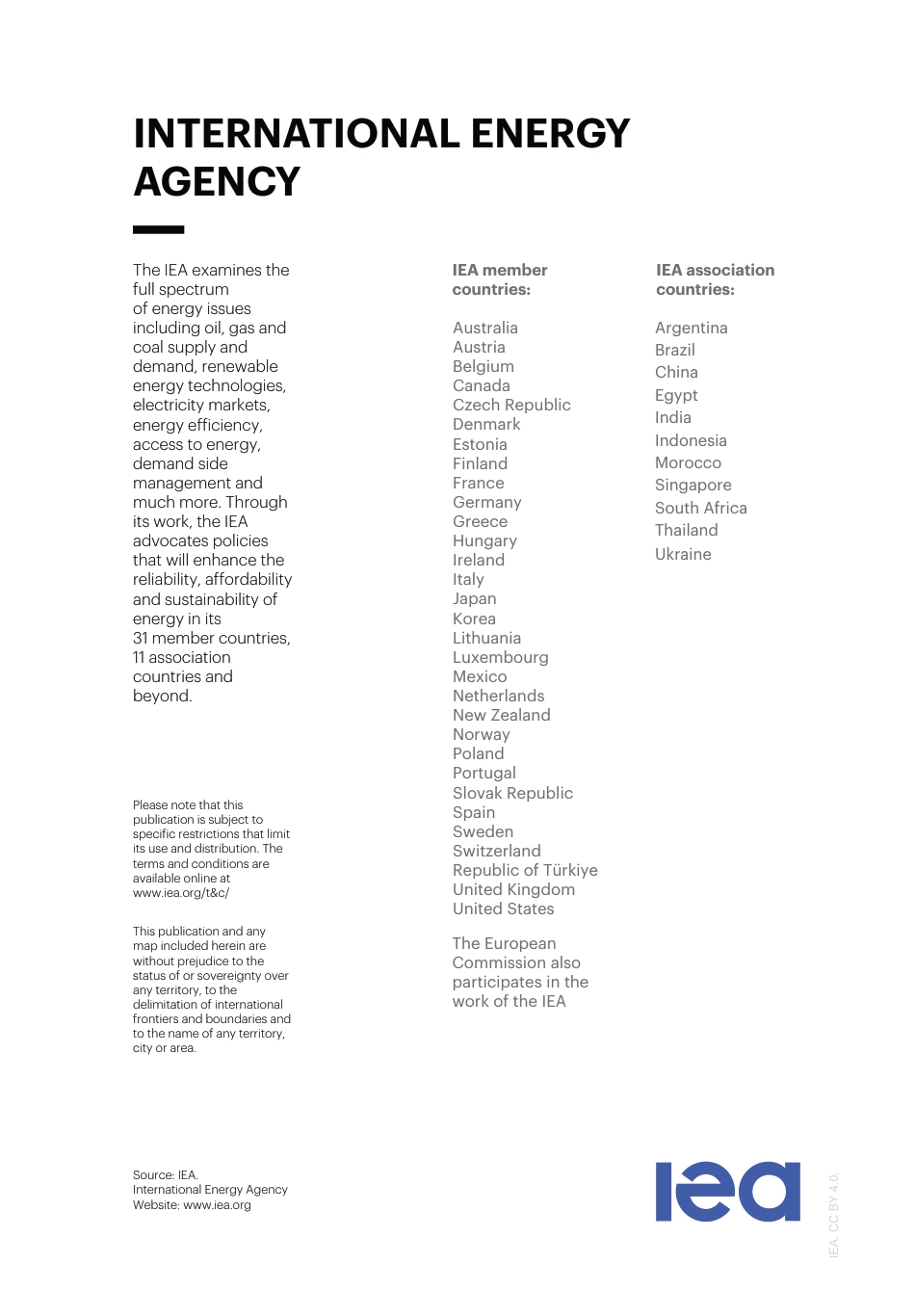DocumentationGlobal Energy and Climate Model DocumentationGlobal Energy and Climate Model The IEA examines the full spectrum of energy issues including oil, gas and coal supply and demand, renewable energy technologies, electricity markets, energy efficiency, access to energy, demand side management and much more. Through its work, the IEA advocates policies that will enhance the reliability, affordability and sustainability of energy in its 31 member countries, 11 association countries and beyond.Please note that this publication is subject to specific restrictions that limit its use and distribution. The terms and conditions are available online at www.iea.org/t&c/This publication and any map included herein are without prejudice to the status of or sovereignty over any territory, to the delimitation of international frontiers and boundaries and to the name of any territory, city or area.Source: IEA.International Energy Agency Website: www.iea.orgIEA member countries: Australia Austria Belgium CanadaCzech Republic Denmark Estonia Finland France Germany Greece Hungary Ireland ItalyJapanKorea Lithuania Luxembourg Mexico Netherlands New Zealand Norway Poland Portugal Slovak Republic Spain Sweden Switzerland Republic of TürkiyeUnited Kingdom United StatesThe European Commission also participates in the work of the IEAIEA association countries:INTERNATIONAL ENERGYAGENCYArgentinaBrazilChinaEgyptIndiaIndonesiaMoroccoSingaporeSouth AfricaThailandUkraineIEA. CC BY 4.0. Table of Contents 1 Table of Contents 1 Overview of model and scenarios ........................................................................................................................ 5 1.1 GEC Model scenarios ......................................................................................



